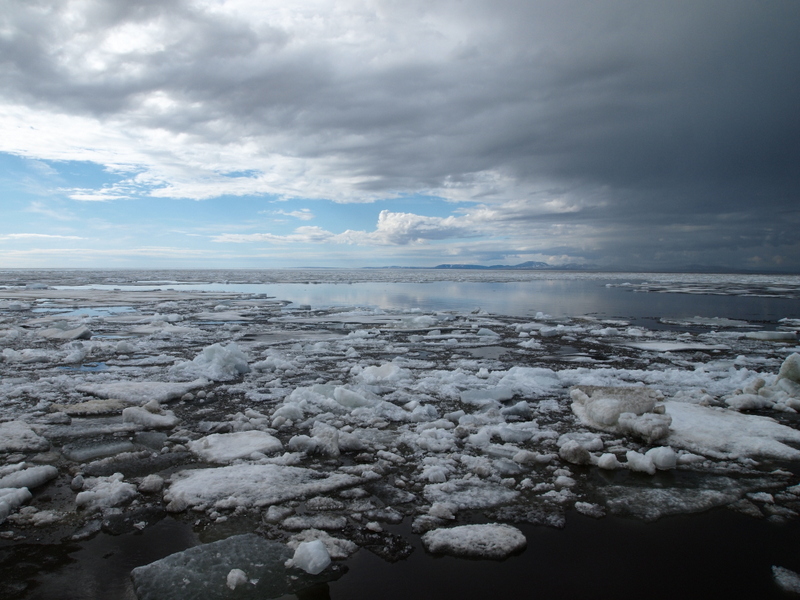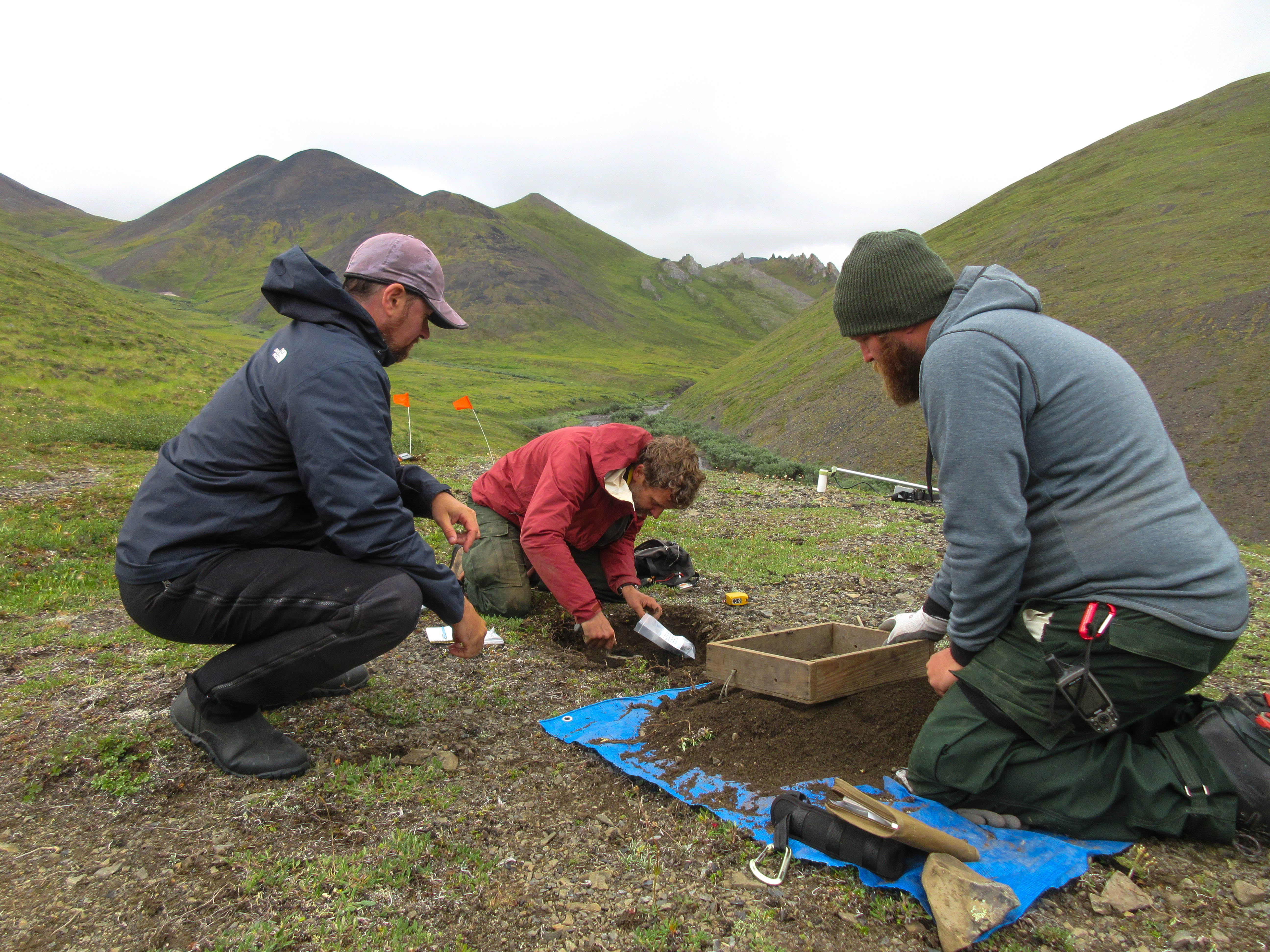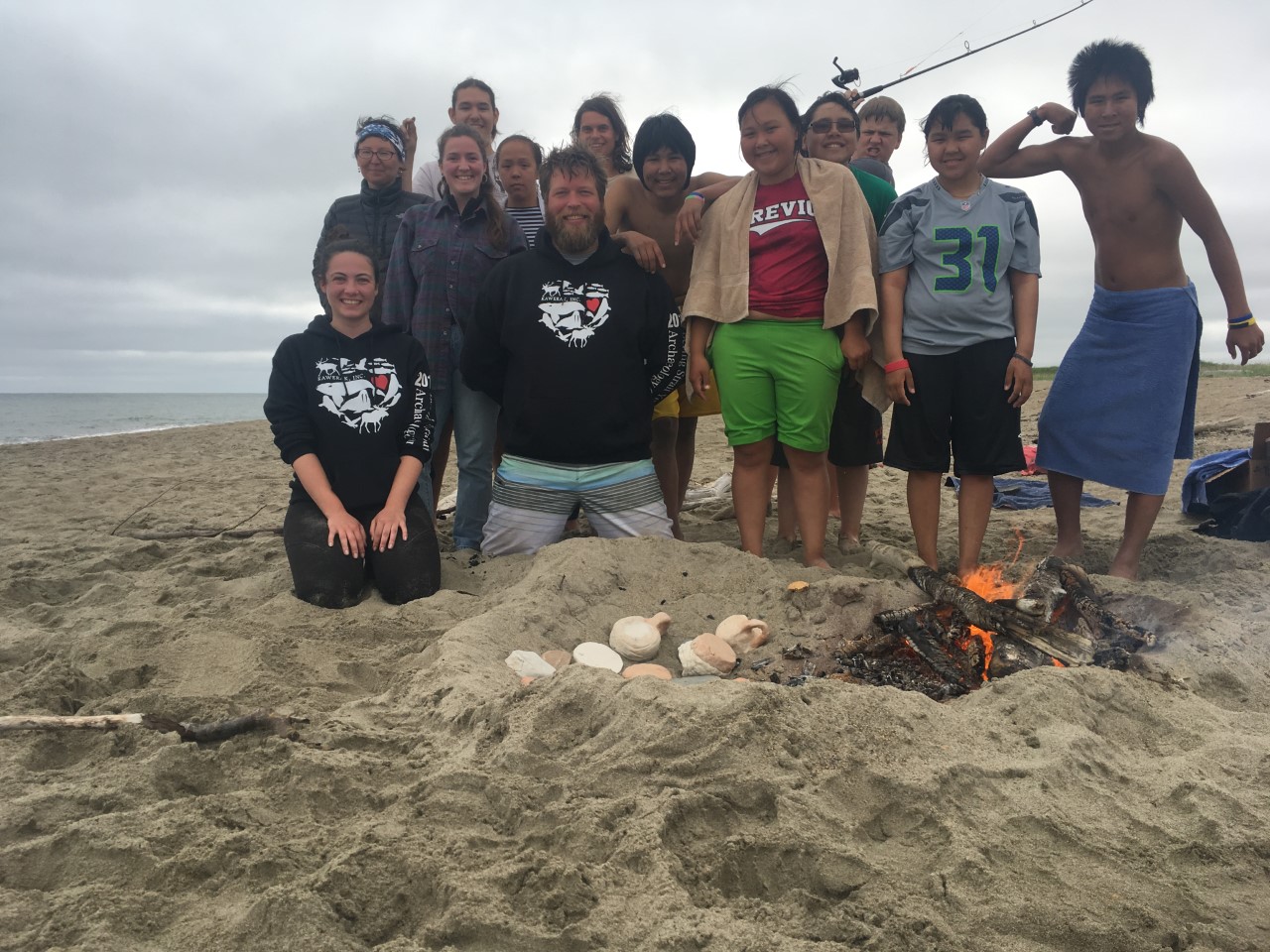One of the challenges of moving to a new place is learning its quirks, the community, and the geography of where you are! That can feel even more daunting in a place located above the Arctic Circle. Not only that, but park employees of Western Arctic National Parklands live outside of the parks where they do research, protect, and recreate. This is relatively unique to the National Park Service lifestyle.
 The end of May into the beginning of June brought break-up. During this time, the ice that once acted as a path for transportation melts and is finally broken apart. It now spills into the Kotzebue Sound from Kobuk Lake and the rivers and floats with the current past Front Street. This street looks out on the water. The liquid landscape reveals mountains that jet out of the sea. Many of those mountains are part of Cape Krusenstern National Monument. I often stare at them dreamy-eyed, since I haven’t had the chance to step foot there yet. Western Arctic National Parklands are located across the Kotzebue Sound, meaning a body of water separates myself from easy access into them. During a typical year, visitors to the parks might fly, boat, or snow machine in depending on the time of year. Covid-19 has slowed these methods of transportation, leaving me to wonder about what I will find when I finally get the chance to go! To get my fix of the parks, I talk with my coworkers about their experiences visiting them.
The end of May into the beginning of June brought break-up. During this time, the ice that once acted as a path for transportation melts and is finally broken apart. It now spills into the Kotzebue Sound from Kobuk Lake and the rivers and floats with the current past Front Street. This street looks out on the water. The liquid landscape reveals mountains that jet out of the sea. Many of those mountains are part of Cape Krusenstern National Monument. I often stare at them dreamy-eyed, since I haven’t had the chance to step foot there yet. Western Arctic National Parklands are located across the Kotzebue Sound, meaning a body of water separates myself from easy access into them. During a typical year, visitors to the parks might fly, boat, or snow machine in depending on the time of year. Covid-19 has slowed these methods of transportation, leaving me to wonder about what I will find when I finally get the chance to go! To get my fix of the parks, I talk with my coworkers about their experiences visiting them. Each time I hear them talk about Kotzebue or the parks, I feel myself revived with energy, ready to get out into the backcountry or explore the intricacies of this new home. I want to bring my virtual guests (YOU) along with me!
Let’s take a look at Kotzebue and the surrounding parks through the eyes of our Archaeologist, Justin.
As we began our interview, Justin carried a mug of coffee out of his house with him. It was afternoon, the sun was beating down on our faces, but the chill in the air was ever present. My laptop and notebook accompanied me outside, as I set up a red, camp chair while maintaining 6 feet for social distancing.
Things are certainly a little less formal in the age of telework. Justin, who is also my neighbor, stood as I prepared to take notes.
Justin, what is the job of an Archaeologist here?
My job includes the inventory, monitoring, and assessment of past cultural resources of the parks. I also handle compliance in reference to Section 106, of the National Historic Preservation Act (NHPA).
I exude the authority of the wilderness coordinator. In the NPS, a wilderness coordinator serves as the senior principal advisor in wilderness and backcountry management.
*Section 10 of NHPA- requires that each federal agency identify and assess the effects its actions may have on historic buildings.
Learn more about designated wilderness in the National Park Service.
How long have you lived in Kotzebue?
I came up for the first time in 2010. It was actually the first place I did archaeological work. My thesis brought be back. I was constantly returning to Kotz and I officially moved up June 28th, 2018.
What is your favorite season, why?
Winter. I grew up in southern California, but I slowly moved further and further north over time. I never got a true winter growing up. I like the idea that it snows.
I’d rather deal with shoveling snow than trying to put up with 102 °F.
If you moved up here, can you recall your first impressions? What stood out to you?
Coming in 2010, I’d say I was a deer in headlights. I remember landing at the old Alaska Air terminal and getting our bags, and then driving around town. Then we went to another terminal and I was placed on another plane. I was really thrown into it my first time.
Moving here brought different impressions. It reminded me of my grandparent’s house growing up. The community feel is very similar due to the fishing and the ability to get in a boat and go. When I was younger, we would do that same thing, by just hopping in a boat to go fishing in the bay. In many ways it was very comforting.
What are your favorite hobbies or activities to do outside of work?
Recently I picked up sewing. I took a mukluk making class. I also got a pattern to make hats, which I have made quite a few of.
*Mukluks- a high, soft boot that is worn in the Arctic and is traditionally made from sealskin or caribou skin.
Do you have a favorite spot in any of the park units of WEAR?
I’m a water person. Any connection to lakes, rivers, or ocean is appealing. I love the coast here, so Cape Krusenstern is a favorite. Cape Krusenstern is where the land meets the water.
Another favorite is the beauty and majesty found in Noatak and the Brooks Range. It’s truly in the middle of nowhere.

What is the hardest part about living in Kotzebue, and how do you overcome that hurdle?
I travel a lot because my position splits time between here and Bering Land Bridge National Preserve, which is managed from Nome, Alaska. Traveling for my job means I don’t get to be in the community as often.
I want to be here, but I might only be here ½ the month during normal working conditions.
Technology helps me overcome this hurdle of distance. It allows me to keep in touch and stay up-to-date.
Tell us about an accomplishment or unique work story.
The thing that I am most proud of is being more accountable to and re-engaging with the tribes for archaeological resource projects and protection.
I feel honored to do the work that I do. In the past, people have not always treated cultural material with the respect that it deserves and our NPS staff has been able to help rectify some of these previous oversights. We are really trying to be conscious of the work that we and others are doing. It is our responsibility to do right by the tribes. As well as protecting and preserving cultural material in the parks.
For guests that visit the Western Arctic National Parklands, there are things they can do to maintain their responsibility to the tribes and to the National Parks. If you find anything out of the ordinary or you believe to be archaeological we ask that you enjoy it’s beauty or uniqueness but please leave it where it is. You can write a description, take a picture to share with park rangers, and if you have the ability to take coordinates, record its location. We don’t encourage sharing these coordinates on social media, but instead sharing them with rangers or cultural resource staff so that we can investigate and possibly connect a tribe back to parts of their culture.
What is something you have been able to do up here that you believe is unique to Kotzebue or life above the Arctic Circle?
For me it is the Arctic Circle Life, like enjoying the midnight sun or snow machining out onto the frozen Kotzebue Sound.
Many people only see the challenges to living here, but these challenges don’t exist all of the time. You make adjustments to them.
What are the most common questions you get from friends, family, or acquaintances who live outside of Alaska?
People think I live in the middle of nowhere and they constantly ask if anyone is near my cabin. They don’t realize that there is a town here, and I’m surrounded by people. I hear some of the same noises that they might in large town or city. The hustle and bustle of people traveling down the street. The only difference is that we typically hear the noises of four-wheelers and snow machines, rather than horns of cars.
I also get asked if I have internet, and we totally do. We have all of those normal technologies that you can find elsewhere.
What should virtual visitors remember about this place? What should visitors who plan to come here make time for when visiting?
This land is and always has been occupied. There has always been a human component here, and though a feeling of seclusion can be experienced, for many people this is a land of subsistence that provides.

Justin and I ended up talking for nearly 2 hours. We got side-tracked often and went on tangents about life during Covid-19, stories from the field, and what it means to be part of a community.
Each of the conversations I have with coworkers have commonalities, with community being one of them. It is very clear that the employees of Western Arctic National Parklands have made a close-knit community out of their coworkers. I feel proud to be welcomed into that community and be uplifted by their view of life here in the Arctic. Such is the case with Justin, who seems to easily find ways to turn the negatives into a positive.
